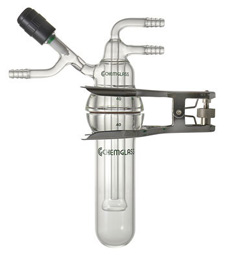| The Home page of ILPI's Safety Data Sheet (SDS) Resource, the leader in SDS information since 1995! | |
| The history and philosophy behind this resource. | |
| A curated collection of books and reference materials concerning Safety Data Sheets and closely related topics. | |
| Paste your plain text SDS into the SDS-Demystifier, and it will be converted into a hypertext-enriched document with links to detailed explanations of each key term. | |
| An extensive list of frequently asked questions about Safety Data Sheets including regulations, content, compliance, and more. | |
| A humorous take on Safety Data Sheet jargon. Fill in the blanks on our entry form to generate a personalized Unsafety Data Sheet to share with your coworkers. | |
| Since 1995, we've maintained this massive curated list of the best places to find Safety Data Sheets on the Internet. | |
| You are here! Way more than a glossary, this hypertext-enhanced resource covers hundreds of SDS-related terms and expert knowledge. Each entry includes both the SDS relevance and links to additional authoritative resources. | |
| Archived results of Safety Data Sheet related polls taken by some of our millions of site visitors | |
| The OSHA regulations behind SDS regulations, including the inspection guidelines and over 400 official interpretations letters under the Hazard Communication Standard | |
| Commercial suppliers of SDS authoring and management software as well as cloud compliance services. | |
| Commercial companies that will create SDS's for your specific needs as well as SDS translation companies. |

Safety signs, banners, and scoreboards? Get yours at Safety Emporium!
Definition

You can get cryogenic sublimators and other lab glassware from Safety Emporium.
- Ketones (pronounced like "key tone") are organic molecules with the general chemical formula R1R2C=O where R1 and R2 are alkyl or aromatic (hydrocarbon) substituents. The two R groups may be the same or different and the carbon atom is bound to the oxygen atom with a double bond (the C=O unit is called a carbonyl unit and is highlighted in red in the drawings below). The carbonyl oxygen atom has two lone pairs of electrons which are usually omitted from line drawings like the ones below:

- Aldehydes are similar to ketones, but one of the R groups is replaced by a hydrogen atom giving a general formula of HRC=O. The aldehyde units, CHO, are highlighted in red:

Additional Info
According to the International Union of Pure and Applied Chemistry, (IUPAC) naming (nomenclature) rules, simple ketones are named by taking the name of the longest acyclic hydrocarbon chain in the molecule, dropping the terminal "e" (if present), and adding the suffix "one" (pronounced with a one "o" as in "own). If the carbonyl is not in a terminal (end) position on the chain, then this is indicated by inserting a numeral before the suffix to indicate the position of the carbonyl carbon along the chain. For example, hept-2-one has the carbonyl group at the second carbon of the 7-carbon chain. In situations where there are other functional groups that take naming precedence, the ketone may be indicated by the use of "oxo". Certain other ketone-containing substructures have additional naming rules that are beyond the scope of our current discussion:

Under IUPAC nomenclature, aldehydes are named by taking the name of the longest acyclic hydrocarbon chain in the molecule, dropping the terminal "e" (if present), and adding the suffix "al", "aldehyde" or "carbaldehyde". In some cases the prefix "formyl" may be used. Two aldehydes are indicated by the suffix "dial". In addition, a number of trivial (traditional) names are still recognized. For detailed naming rules see Further Reading below. There is no need to use a number to indicate the position along the chain like there is with ketones because aldehydes are always terminal (end) groups.

Aldehydes and ketones are widely used industrial chemicals both as solvents and as chemical intermediates (ingredients for other chemicals). Most can be classified as volatile organic compounds meaning that their vapors may be easily inhaled or ignited. Many ketones and aldehydes are also flammable as liquids and solids.
Important note: formaldehyde is an industrially important aldehyde that is used on the billion ton scale. Glutaraldehyde is a "cold sterilent" used widely in the health care industry. Both are potent sensitizers. Exposure to either of these can make you hypersensitive to contact with other chemicals and carries definite health risks. Special rules and regulations have been developed to minimize formaldehyde exposure; see Further Reading below for more information.
Several ketones and aldehydes have been classified as known or likely carcinogens. For example, formaldehyde and acetaldehyde are known carcinogens. Studies are still underway on glutaraldehyde but it appears to have a much lower risk (if any) of carcinogenicity than formaldehyde. Acetone has not been reported to cause cancer.
SDS Relevance

Get your GHS-compliant labels and signs from Safety Emporium.
Ketones and aldehydes usually appear on Safety Data Sheets in one of two contexts:
- As incompatible materials. Both are rather reactive classes of chemicals, and undergo a wide range of desirable (and sometimes undesirable) reactions. Ketones and aldehydes are particularly incompatible with concentrated nitric and sulfuric acid mixtures. Incompatibilities are listed in Section 10 (stability and reactivity) of the SDS.
- In discussion of the solubility of the material in various solvents. The polar nature (uneven distribution of electron density) of ketones creates intermolecular alignment between other polar molecules and increases their solubility in other polar materials. Smaller chain ketones and aldehydes can have appreciable solubility in water. This kind of data is found in Section 9 (physical and chemical properties) of the SDS.
Ketones may also be indirectly referenced in Section 11 (toxicological information) of the SDS, with the term ketosis, a medical condition in which ketones build up in the body.
The desirable chemical reactivity properties of aldehydes become undesirable when these chemicals enter your body, so be sure to read the label and SDS for any ketone or aldehyde-containing materials before use. You can find appropriate precautions to take when working with them on Section 8 (exposure controls/personal protection) of the SDS. Engineering controls such as fume hoods and personal protective equipment (PPE) such as gloves and respirators are a very good idea.
Further Reading

Get your pure water valves and faucets from Safety Emporium.
- OSHA has a good web site on formaldehyde, including links to 29 CFR 1910.1048, the Formaldehyde Standard. It also has tips for employees and employers.
- OSHA also offers tips on the use of glutaraldehyde.
- OSHA had several sets of health guidelines for specific aldehydes and ketones, but these seem to have disappeared. Archival copies are available here:
- Health Effects of Acetone at the Canadian Centre for Occupational Health & Safety.
- The Virtual Textbook of Organic Chemistry has an overview of ketones and aldehydes that starts with nomenclature and then summarizes their chemical reactivity.
- Aldehydes, Ketones, Carboxylic Acids, And Esters from an open-source textbook, Chemistry, by Rice University, courtesy of BC Open Textbooks.
- Nomenclature of Aldehydes & Ketones at Chemistry LibreTexts.
- IUPAC nomenclature for aldehydes, ketones and their derivatives thanks to ACD Labs.
- Khan Academy has several online presentations about aldehydes and ketones.
See also: alcohol, carboxylic acid, chemical formula, carbon monoxide, ketosis, VOC.